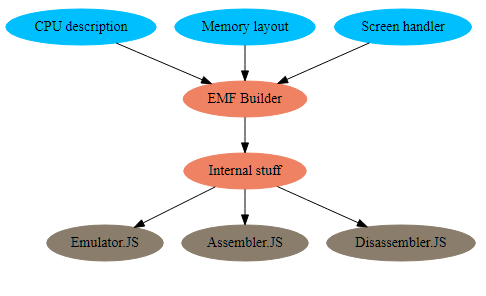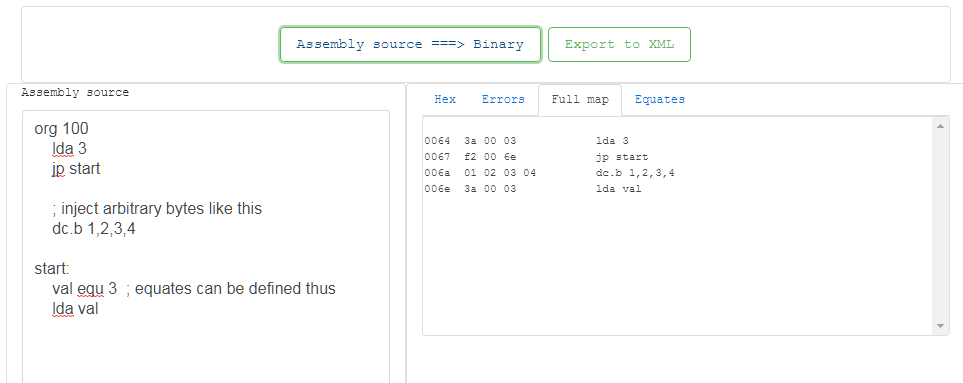Build emulators without coding!
EMF stands for the emulation framework, which aims to significantly lower the barrier to entry for emulation developers, and would-be emulation developers.
It exists in two parts: the first is the EMF builder which takes an XML description of a computer system, and translates it into source code, generating an emulator, assembler, and disassembler - all from the same originating file.





